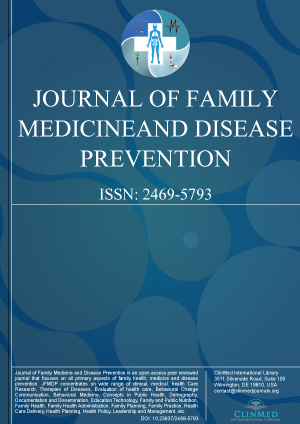Open Access DOI:10.23937/2469-5793/1510028
Cervicofacial Actinomycosis
Martin Cabrejas BM, Gargantilla Madera P and Pintor Holguin E
Article Type: Short Review | First Published: March 25, 2016
Actinomycosis is an infectious disease with a world-wide distribution caused by anaerobic and microaerophilic bacteria residing in the oral cavity. Actinomycosis is often difficult to diagnose as it can mimic numerous infectious and noninfectious diseases. It is nowadays uncommon in Europe and the possibility that we may face a patient with actinomycosis is therefore underestimated....
Open Access DOI:10.23937/2469-5793/1510027
Update on Colorectal Cancer Prevention and Screening
Michael A Noll and Jeanne M Ferrante
Article Type: Review Article | First Published: March 14, 2016
Colorectal cancer (CRC), the 3rd most common cancer type worldwide, results in almost 700,000 deaths from cancer annually. In the United States, there are an estimated 134,490 new cases of CRC diagnosed in 2016, and approximately 49,190 Americans will die from CRC. Risk factors include: advancing age; male gender; Ashkenazi Jewish descent; African-American race; low socioeconomic status; inflammatory bowel disease; diabetes; personal or family history of adenomatous polyps, advanced serrated pol...
Open Access DOI:10.23937/2469-5793/1510026
Social Ecology and Diabetes Self-Management among Pacific Islanders in Arkansas
Pearl Anna McElfish, Ramey Moore, David Woodring, Rachel S. Purvis, Gregory G. Maskarinec, WilliaminaIoanna Bing, Jonell Hudson, Peter O. Kohler and Peter A. Goulden
Article Type: Research Article | First Published: March 14, 2016
Chronic diseases disproportionately affect ethnic and racial minorities. Pacific Islanders, including the Marshallese, experience some of the highest documented rates of type 2 diabetes. Northwest Arkansas is home to the largest population of Marshallese outside of the Republic of the Marshall Islands, and many migrants are employed by the local poultry industry. This migrant population continues to increase because of climate change, limited health care and educational infrastructure in the Mar...
Open Access DOI:10.23937/2469-5793/1510025
How can GPs Best Handle Social Determinants in Practice? Application in the Brussels Environment
Jean-Pierre Unger, Sarah Shelmerdine, Casper van der Veer and Michel Roland
Article Type: Review Article | First Published: March 10, 2016
Properly addressing patients' social problems in clinical decisions is central to the widely advocated delivery of bio-psychosocial care. Against the backdrop of a wealth of scientific studies describing social determinants acting upon health status, this position paper aims to orient general practitioners in the practical management of these determinants. This paper follows on from a previous one that dealt with the use of family therapy techniques in addressing interpersonal and emotional stre...
Open Access DOI:10.23937/2469-5793/1510024
Acute Rhabdomyolysis and Acute Cocaine Intoxication
Gargantilla Madera P, Martin Cabrejas BM and Pintor Holguin E
Article Type: Short Commentary | First Published: January 21, 2016
Rhabdomyolysis is a condition resulting from the release of large quantities of myocyte breakdown products into the circulation, following injury to striated muscles. It is a clinical and biochemical syndrome, defined as an elevation of serum creatine kinasa activity (sCK) to at least 10 times the normal upper limit followed by a rapid decrease of the sCK level back to normal values....
Open Access DOI:10.23937/2469-5793/1510023
Laennec and the Stethoscope
Gargantilla P, Martin BM and Pintor E
Article Type: Short Commentary | First Published: January 16, 2016
On the occasion of the bicentenary of the birth of the stethoscope we pay homage to this brilliant invention. The stethoscope may be the one instrument common to all doctors and also several health professionals, no other symbol so strongly identifies a doctor than a stethoscope dangling around the neck. Until 1816 physicians used direct auscultation (placing the ear on the chest wall), it was known to Hippocrates but little practiced. It was hard to perform this act on obese or endowed females....

